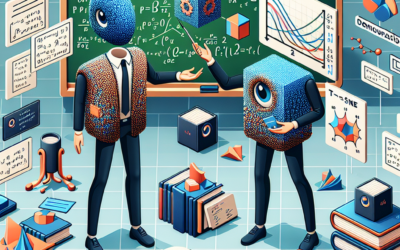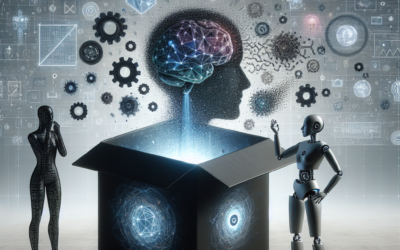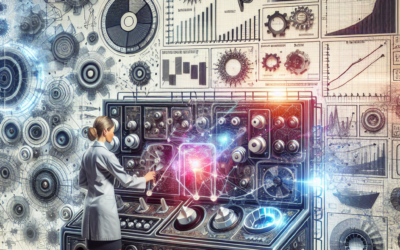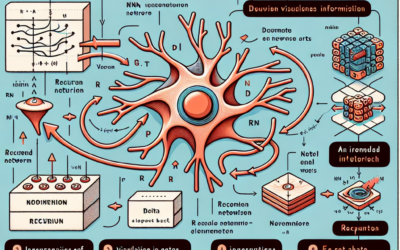Some of My Deep Learning PoC's - Projects and Articles
Explore the foundational guidelines for crafting AI that prioritizes human values, ethical integrity, and sustainable impact.In a world where artificial intelligence is rapidly evolving, it's crucial to anchor our innovations in principles that ensure technology...
Dimensionality Reduction Techniques: PCA and t-SNE Explained
Dimensionality reduction is a crucial technique that helps simplify complex datasets while retaining their essential features. Among the various methods available, Principal Component Analysis (PCA) and t-Distributed Stochastic Neighbor Embedding (t-SNE) are two of...
Explainable AI: Understanding the Black Box
` Artificial Intelligence (AI) has revolutionized various sectors, from healthcare to finance, by providing powerful tools for data analysis and decision-making. However, as AI systems become increasingly complex, they often operate as "black boxes," making it...
Model Evaluation Metrics: Precision, Recall, F1 Score, and Beyond
In the realm of machine learning and data science, model evaluation is a critical step in ensuring that predictive models perform effectively. Among the various metrics available, precision, recall, and F1 score are some of the most widely used. Understanding these...
Hyperparameter Tuning: Getting the Best from Your Models
Machine learning, the performance of a model is not solely dependent on the algorithm used or the quality of the data. A critical aspect that can significantly influence the outcome is hyperparameter tuning. This process involves optimizing the parameters that govern...
Time Series Analysis and Forecasting with AI
Time series analysis and forecasting have become essential tools in various fields, including finance, economics, healthcare, and environmental science. With the advent of artificial intelligence (AI), these techniques have evolved significantly, enabling more...
Dimensionality Reduction Techniques: PCA and t-SNE Explained
Dimensionality reduction is a crucial technique that helps simplify complex datasets while retaining their essential features. Among the various methods available, Principal Component Analysis (PCA) and t-Distributed Stochastic Neighbor Embedding (t-SNE) are two of...
An Overview of Recurrent Neural Networks (RNNs)
Recurrent Neural Networks (RNNs) have emerged as a powerful tool in the field of artificial intelligence, particularly for tasks involving sequential data. Unlike traditional neural networks, RNNs are designed to recognize patterns in sequences of data, making them...
Natural Language Processing (NLP): Basics and Applications
Natural Language Processing (NLP) is a fascinating field at the intersection of computer science, artificial intelligence, and linguistics. It focuses on the interaction between computers and humans through natural language. The goal of NLP is to enable machines to...
Understanding Convolutional Neural Networks (CNNs)
Convolutional Neural Networks (CNNs) have emerged as a powerful tool, particularly in the field of image processing. Their ability to automatically and adaptively learn spatial hierarchies of features from images has revolutionized how machines interpret visual data....
Understanding Deep Learning
Deep learning is transforming industries by solving complex problems with advanced algorithms.
- Healthcare: Diagnosing diseases from medical images and predicting patient outcomes.
- Finance: Detecting fraud in real-time and enhancing credit scoring.
- Automotive: Enabling autonomous driving and improving driver-assistance systems.
- Retail: Providing personalized recommendations, optimizing inventory, and forecasting demand.
- Entertainment: Enhancing content creation, improving recommendation algorithms, and powering virtual assistants.
- Manufacturing: Optimizing predictive maintenance, quality control, and robotics.
- Education: Personalizing learning experiences and automating grading systems.
- Energy: Optimizing resource management and predicting equipment failures.
- Logistics: Improving route planning and automating warehouse operations.
- Agriculture: Enhancing crop monitoring and automating harvesting processes.

Deep learning is a subset of machine learning that uses neural networks with many layers to analyze various types of data. It has revolutionized fields such as computer vision, natural language processing, and autonomous systems.
By mimicking the human brain’s structure and function, deep learning models can achieve unprecedented accuracy in tasks like image and speech recognition, making it a cornerstone of modern AI advancements.
Impact of Deep Learning
100
Global AI Market Size: $327.5 billion by 2026
100
Annual Growth Rate: 39.7% CAGR
100
Deep Learning in Healthcare: $6.6 billion by 2025
100
Autonomous Vehicles: $556.67 billion by 2026
100
AI in Retail: $23.32 billion by 2027
100
Deep Learning Patents: 60,000+ filed in 2020
Deep Learning FAQs
What is deep learning?
Deep learning is a subset of machine learning that uses neural networks with many layers (deep networks) to analyze various types of data. It mimics the human brain’s ability to learn from experience and is particularly effective in tasks like image and speech recognition.
How does deep learning differ from traditional machine learning?
Traditional machine learning relies on algorithms to parse data, learn from it, and make informed decisions. Deep learning, on the other hand, uses neural networks with multiple layers to automatically discover representations from raw data, requiring less human intervention for feature extraction.
What are neural networks?
Neural networks are computational models inspired by the human brain, consisting of interconnected nodes (neurons) that process data in layers. They are the foundation of deep learning, enabling machines to recognize patterns and make decisions based on complex data inputs.
What are some common applications of deep learning?
Common applications of deep learning include image and speech recognition, natural language processing (NLP), autonomous driving, medical diagnosis, and predictive analytics in various industries such as finance, healthcare, and retail.
What are the challenges of deep learning?
Challenges of deep learning include the need for large datasets, high computational power, and the complexity of tuning hyperparameters. Additionally, deep learning models can be difficult to interpret, making it challenging to understand how they arrive at specific decisions.








